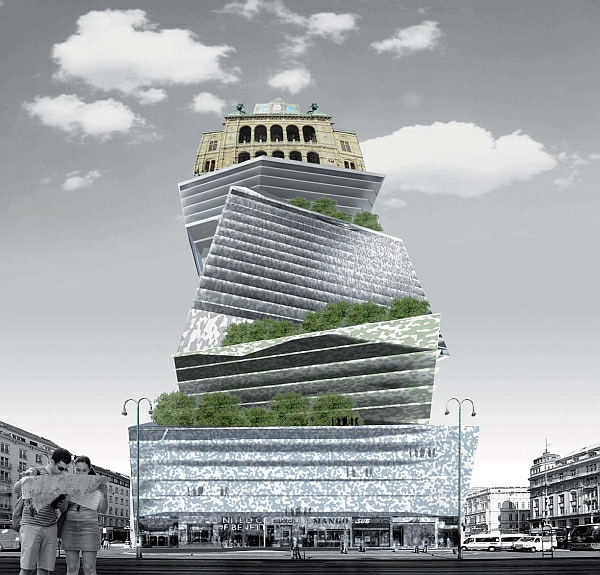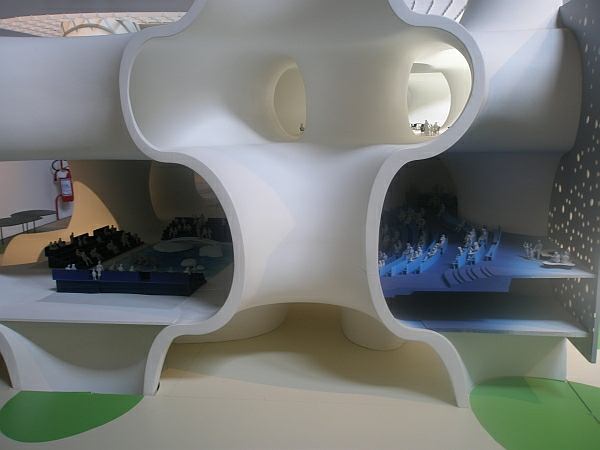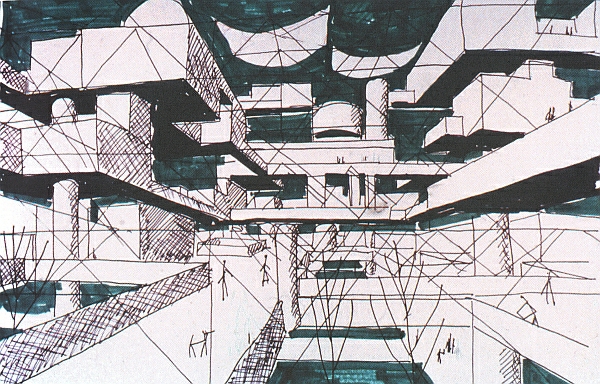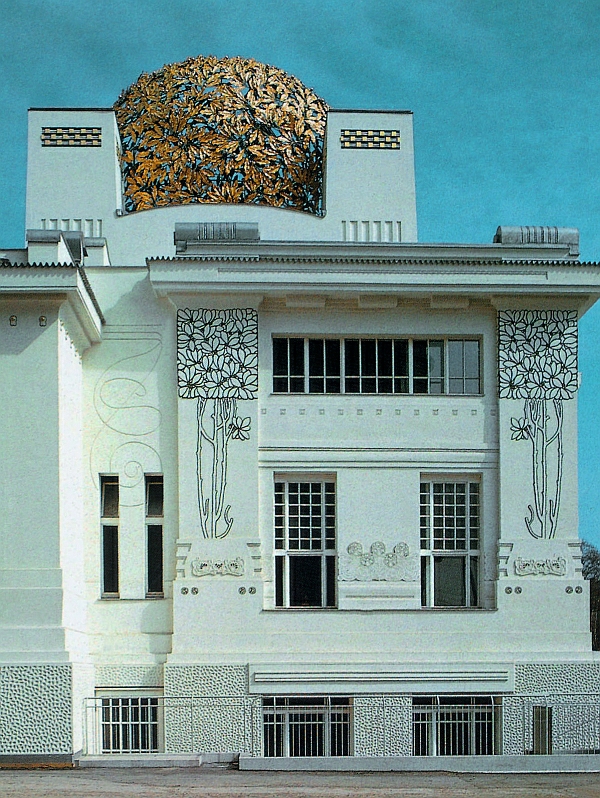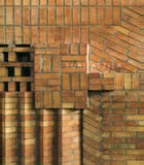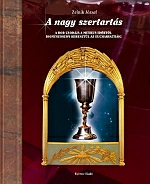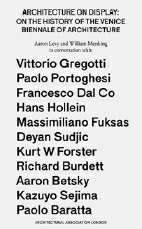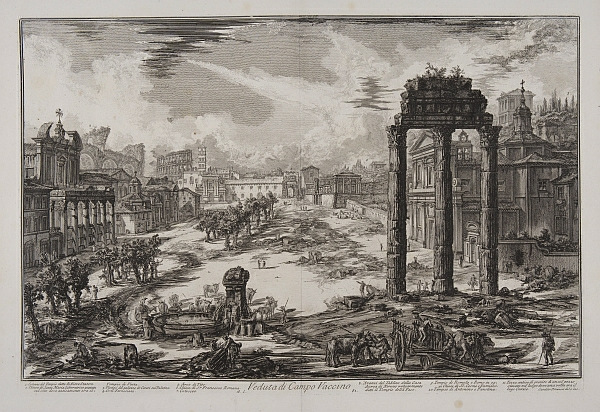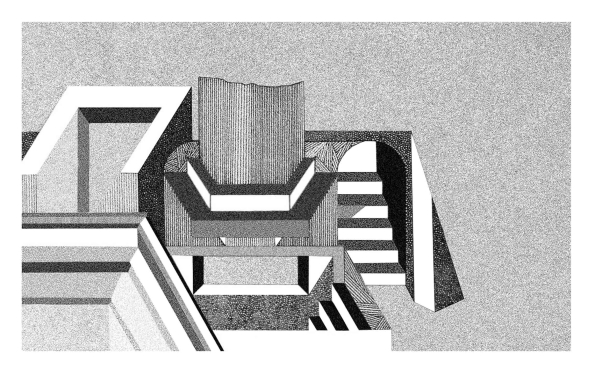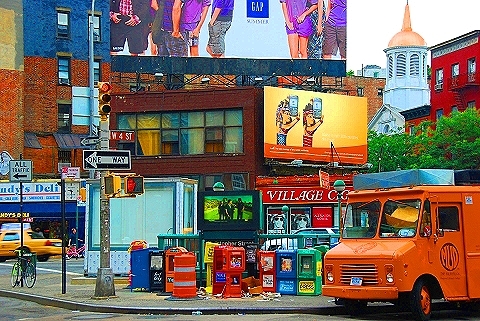Bécs és a jelen kapcsolata gyakran összeegyeztethetetlennek tűnik. Ha csak a szokásokra és tradíciókra fókuszálunk – legyenek azok a legmagasabb színvonalon – falakat emelünk a jövő városának elképzelései és megoldásai elé. A tervpályázatok bősége mutatja, hogy igenis vannak építészek, tervezők, művészek és városfejlesztők, akik az alapokig visszamenően gondolkodnak…
Újragondolt flexibilis terek
A kurátor személye kétségkívül erős japán jelenléttel párosul, ahogyan ezt a hozott példák is mutatják. A város és a személyes tér alapegységének, a lakóháznak alakulását – nem véletlen – a japán pavilon hozza, Tokió példáján keresztül. A város, vagy inkább megapolisz, egyedi jellegzetességei ellenére is építészeti „játszótérnek”, labornak tekinthető – vallják a pavilon kurátorai.
Két alkotótábor
Építészhallgatók Mosonmagyaróváron
BME Urbanisztika Tanszékének alkotótábora, 2010
BME Középülettervező Tanszék alkotóhete
Valkonya, 2010. július
A mobil építészet Budapesten kezdődött?
A Trafó Galériában megnyílt kiállításon – a címből várható tartalom ellenére – nem Yona Friedman művei láthatók, de ez semmit nem von le az értékéből. A „mobil építészet” doyenje erőteljesebben van jelen a pinceszinti teremben, mint ha saját, szignált, jegyzett tervei borítanák a falakat. Az építész dolga csupán annyi, hogy használható elemekkel lássa el…
Az „egyszer volt, hol nem volt” életreform
Josef-Maria Olbrich (1867-1908) halálának centenáriumára az MQ Bécs Leopoldmuseum – Darmstadt és Berlin szakintézményeivel összefogva – a szecesszió egyik legmarkánsabb művészének 300 alkotását, épületterveket, bútorokat, kerámiákat, textileket és grafikai munkákat felvonultató retrospektív tárlatot rendezett.
Két könyv az építés tiszteletére
Turi Attila. Építészalbum, 2010. 156 oldal
Makovecz Imre előszava
Csernyus Lőrinc. Serdián Kiadó, 2009. 190 oldal
Szöveg: Szegő György
Tradíció és tudomány
Az elmúlt 25 évben – szamizdatban, majd a szabad könyvkiadás szűkös anyagi keretei közt – de nálunk is kijöttek a nyugati könyvpiacon félévszázada reneszánszukat élő ezoterikus klasszikusok, a keleti gondolkodás alapművei és a múlt századforduló szellemtudományos munkái is. Hozzá, párhuzamosan az ezeket már a modernitás felől értelmező pszichiáter C. G. Jung…
Architecture on display
Az Architectural Association kiadójának gondozásában megjelent angol nyelvű kis interjú-gyűjteményben a Velencei Építészeti Biennáléról mesélnek az eddigi kurátorok. A különleges anyagot jelentő beszélgetéssorozat kezdeményezői William Menking és Aaron Levy voltak. Beszélgetéseik a kurátorokkal megfogható közelségbe hozzák a biennálét.
Le Arti di Piranesi
A Velencei Biennáléval egy időben rendezett kiállítás Piranesi életművének minden eddiginél teljesebb bemutatását tűzte ki célul, amelyet a hagyományos kiállítási elemek mellett – az új technológiai lehetőségek kihasználásával – még szemléletesebben valósít meg. A különböző művészeti ágakban egyaránt otthonosan mozgó művész…
Fenntarthatóság az építészeti tervezésben
A Magyar Építőművészek Szövetsége, a MÉSZ-UIA „Megújuló Források” munkabizottságának és a Magyar Építész Kamara szervezésében tisztelettel meghívjuk a „Fenntarthatóság az építészeti tervezésben” című szimpóziumra és könyvbemutatóra 2010. november 15-én 14.00 órától a Magyar Építőművészek Szövetsége székházának Kós termébe.
Építészek az építészetről
A folyóirat 2010 tavaszán az építészet helyzetéről tettünk fel három körkérdést a hazai kulturális élet néhány jelentős személyiségének. Ezeket a válaszokat az Utóirat 2010/3. számában közöltük. Most, második körben ugyanezeket a kérdéseket tettük fel magyar építészeknek, az ő válaszaikból kínálunk válogatást.
Köztér, demokrácia és kulturális sokszínűség
Az alábbi írás célja, hogy összefoglalja az Egyesült Államokban az elmúlt néhány évtizedben a városi közterek jelentéséről, jelentőségéről és megfelelő kialakításáról született társadalomtudományos munkák egy részét. Az írás a köztér meghatározásának nehézségeivel és néhány definíciós kísérlettel kezdődik, majd rövid áttekintést ad a közterek formáinak és funkcióinak…
